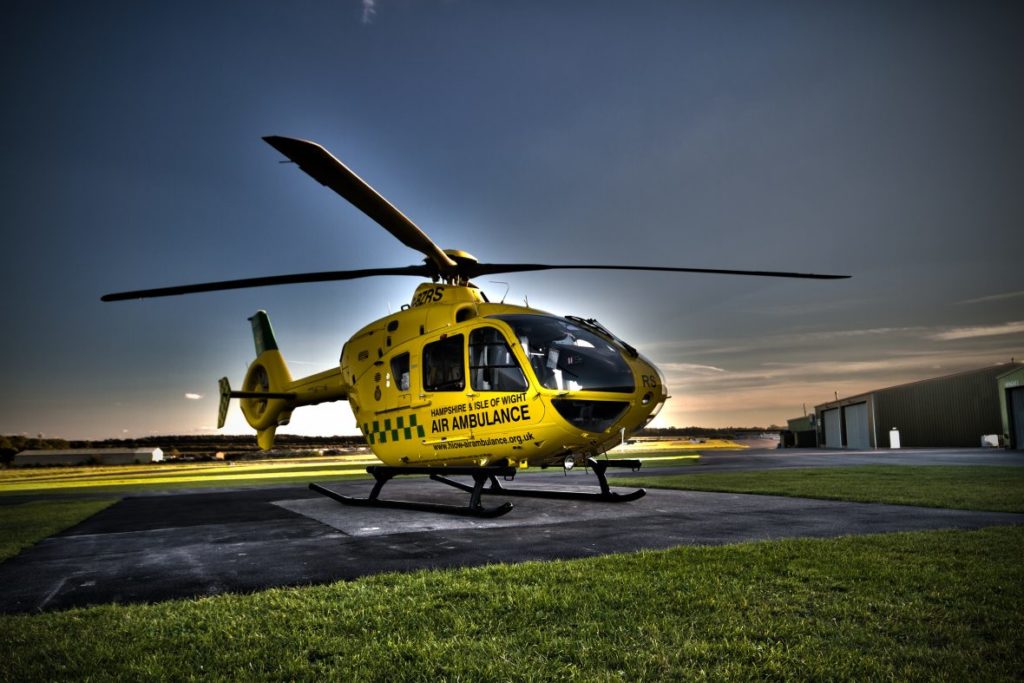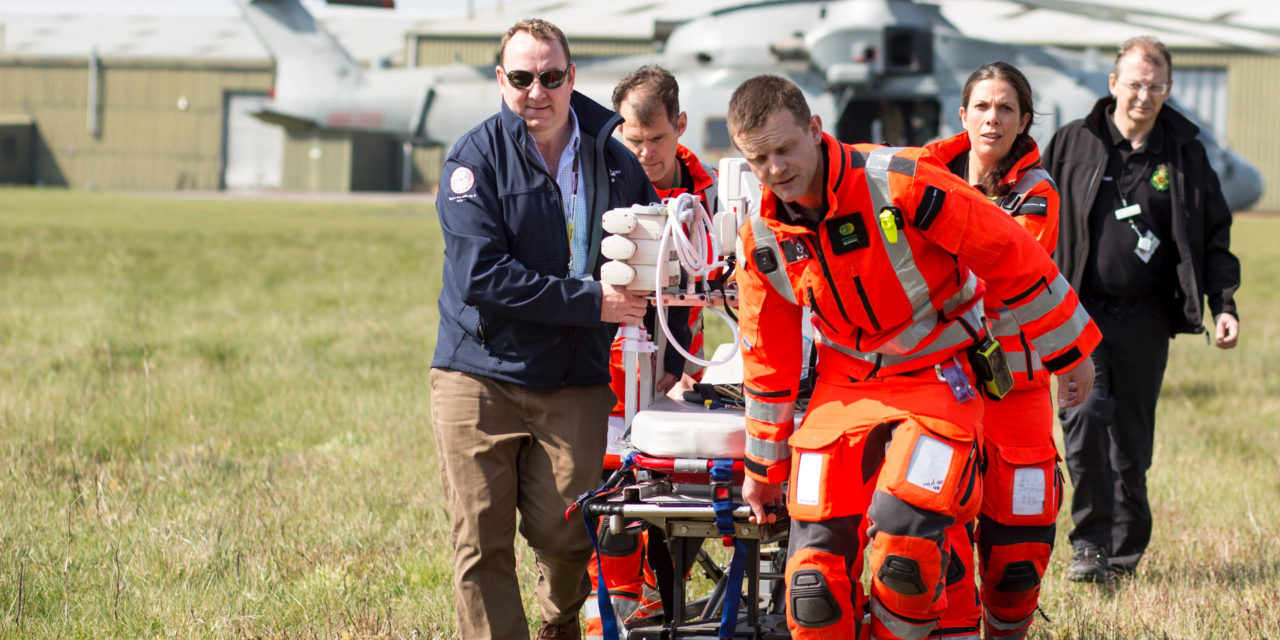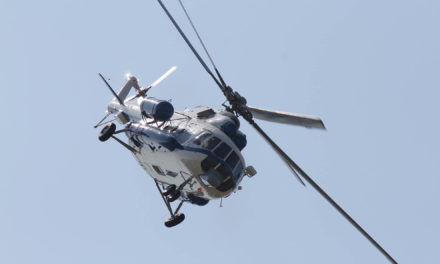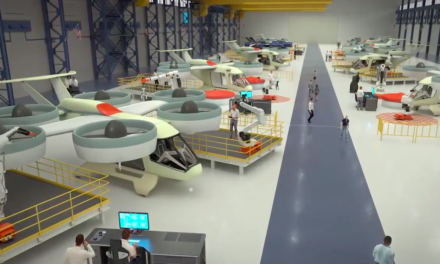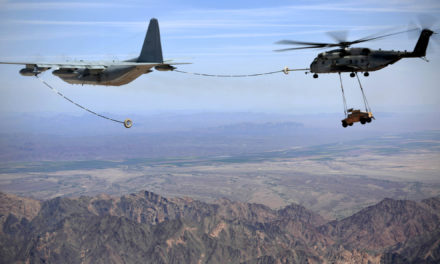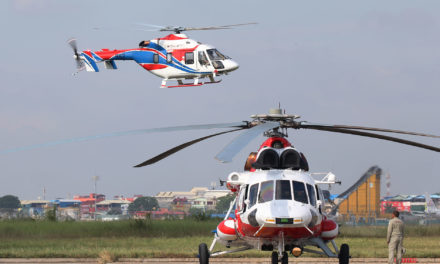By Fred Vergnères and HIOWAA
While the United Kingdom East has just announced a three-week extension of the containment to cope with Covid-19, air evacuation of patients is intensifying, particularly in the south of the country.
The operator, Hampshire and Isles of Wight Air Ambulance – HIOWAA – has unveiled that it is one of the first air ambulance services to work with the Royal Air Force (RAF) to transport Covid-19 patients. On Tuesday 7 April, members of the HIOWAA Intensive Care Unit were able to carry out the emergency transfer of a patient from Jersey to Southampton University Hospital in an RAF Chinook.
Training with the RAF
A mission previously prepared during an exercise carried out in particular with units from Odiham Air Force Base housing the Chinooks last week on the Thruxton site of HIOWAA base. “Our intensive care teams have been working alongside military personnel to prepare to provide increased support to patients in the Isle of Wight and other more remote areas during the Covid-19 pandemic,” said the teams from the Charitable Care Unit.
During the exercise, the doctors and nurses simulated the loading of critically ill patients and provide constant care support within the cargo holds of the rotary wing aircraft currently in service with the RAF, namely Chinook HC6, Puma HC2 and Merlin HC3. The operational procedures practiced during this exercise have been incorporated into new operational procedures being developed to oversee the collaboration between military crews and air ambulance services across the country.
For Alex Lochrane, President and CEO of HIOWAA, these missions are vitally important because “It is absolutely our duty to do everything we can to ensure that patients on the Isle of Wight, and other more remote areas, receive the critical care they need during the current pandemic. This is an extremely impressive and vitally important collaboration with the RAF and I am immensely proud of our intensive care clinicians and the Group Care Management team at Southampton University Hospital, who have responded with flexibility and total disinterest to the rapidly evolving health crisis, demonstrating their usual professionalism, dedication and teamwork“.
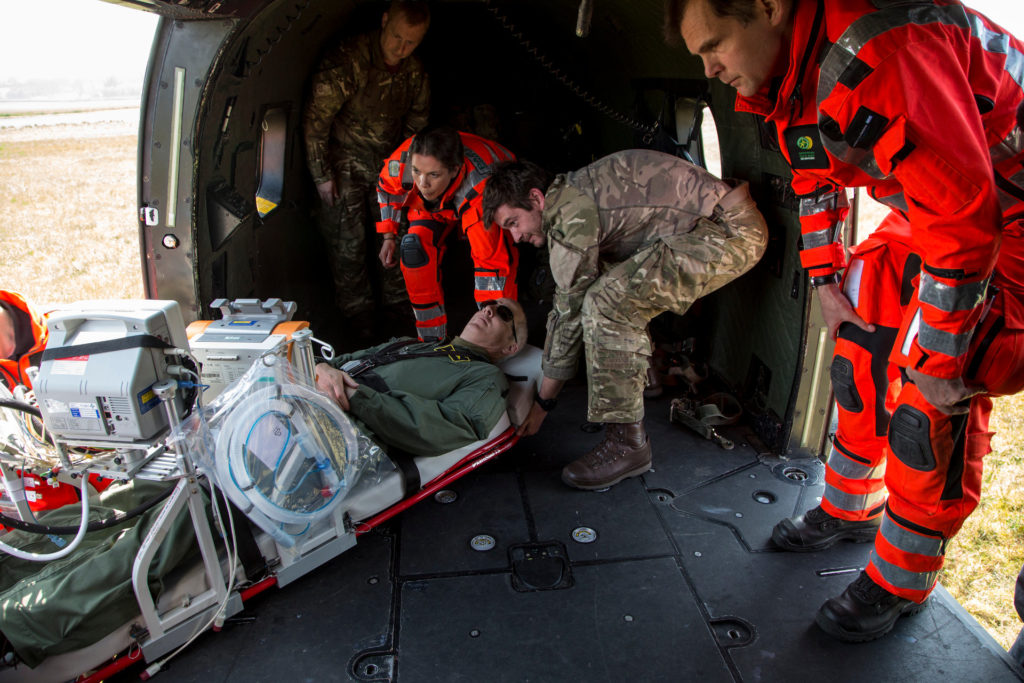
The units on board the Odiham Chinooks
Following this initial operation, the charity’s ambulance and medical teams are now expected to be integrated de facto on board military helicopters, particularly Chinooks operating in the region to provide urgent critical care to patients who will be transferred to the country’s major trauma centres, including Southampton University Hospital and the new NHS Nightingale Hospital at the ExCel centre in London. To meet the need for emergency medical evacuations in the south of the country, three Chinook helicopters, each capable of transporting up to two ventilated patients each, have been placed on standby at the Odiham base in Hampshire. The use of these helicopters is proving to be particularly vital as Dr Simon Hughes, HIOWAA’s senior consultant in pre-hospital emergency medicine for over 10 years, who led the joint training session, points out: “The Chinook not only has the advantage of range and speed, but also offers more cabin space than the EC135 operated by HIOWAA, allowing us to continue treating patients who could potentially be positive on the Covid-19, while maintaining a safe distance from the military crew“.
In addition to the Covid missions, the charity’s teams continue to respond to critically ill patients throughout the region, implementing the EC135 that the charity received in 2015 to replace an identical aircraft delivered in 2010.
